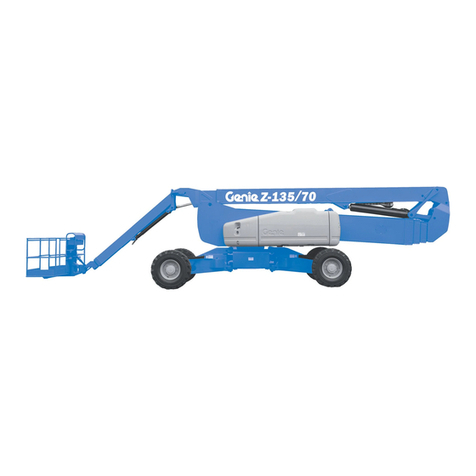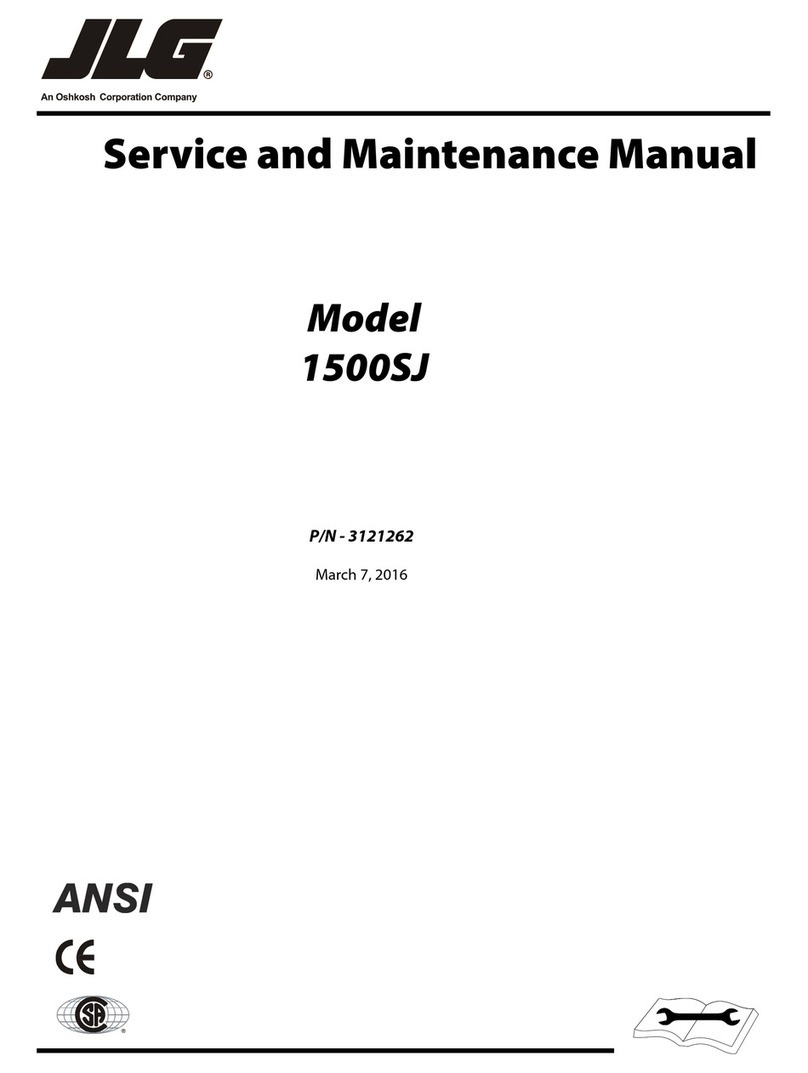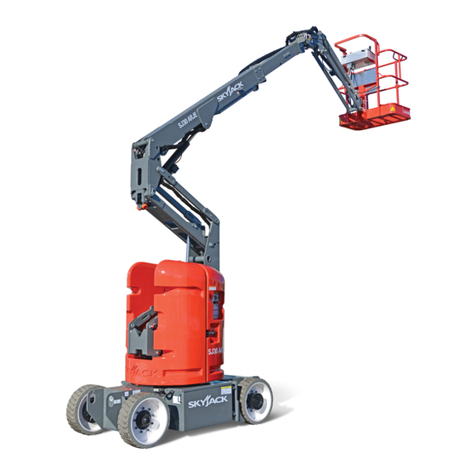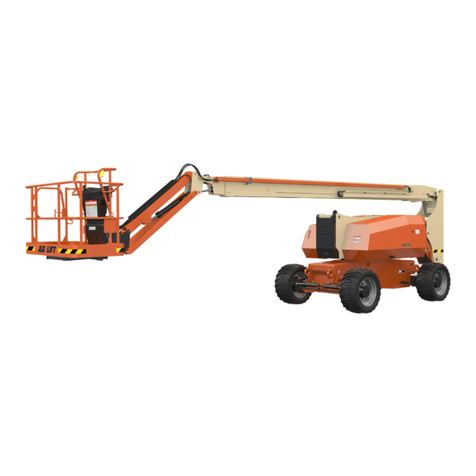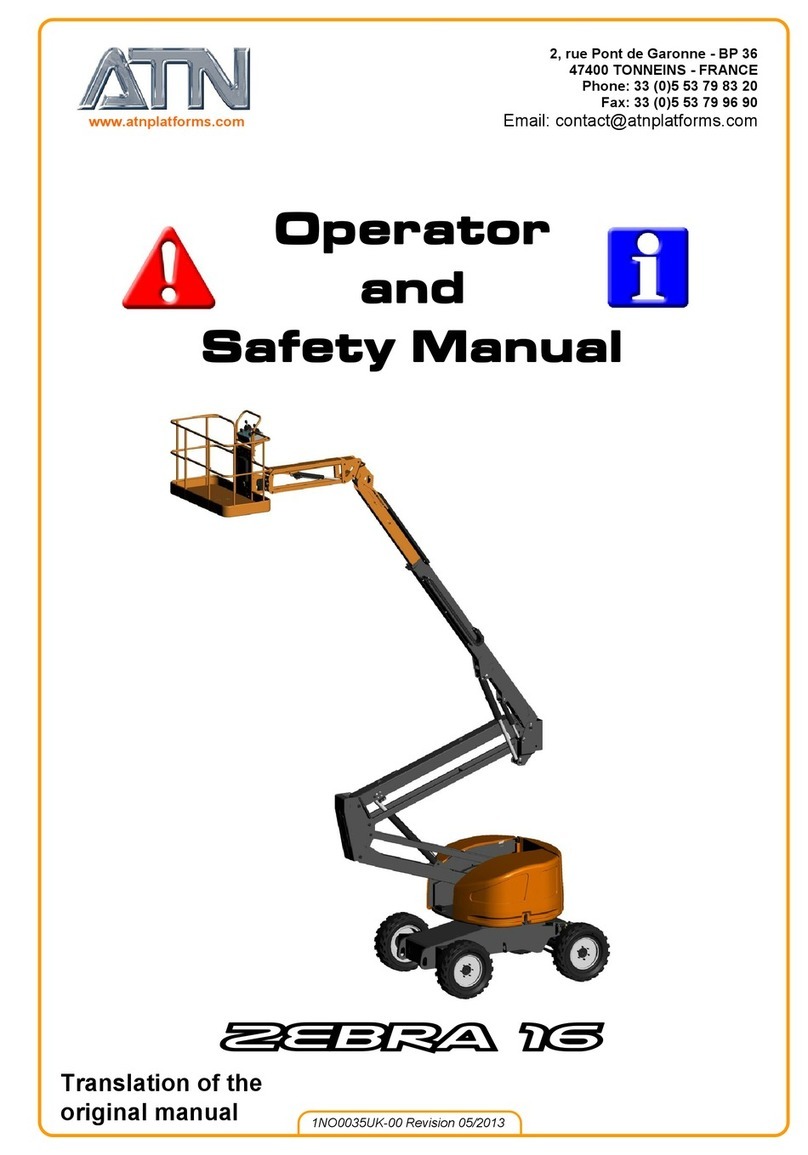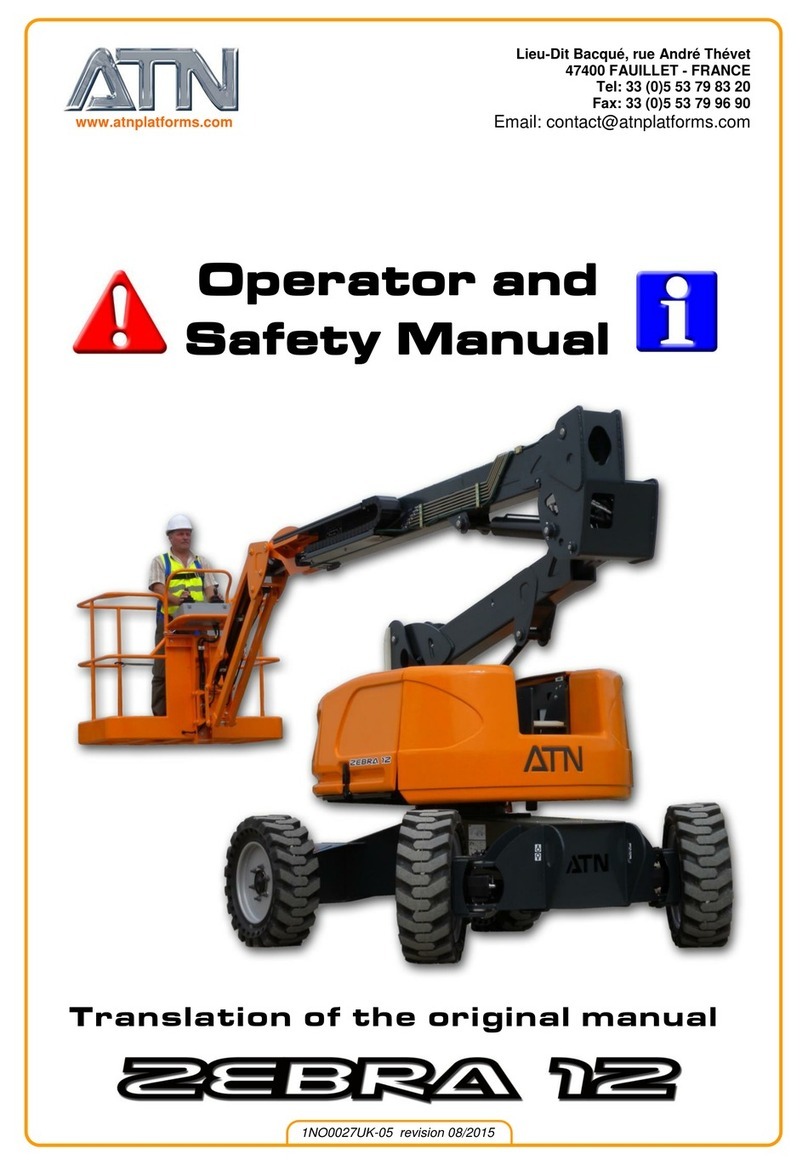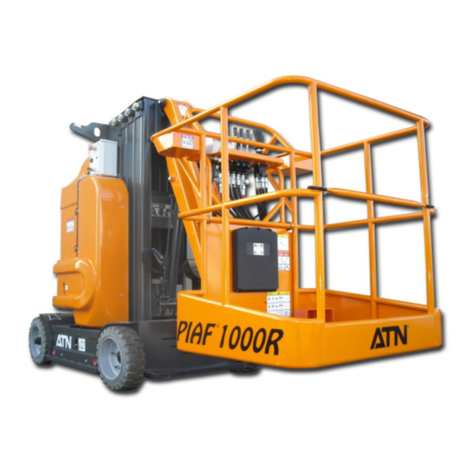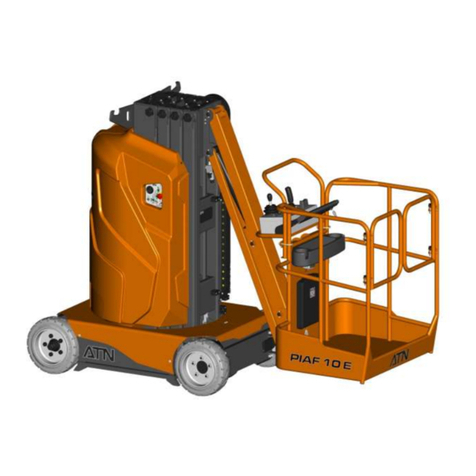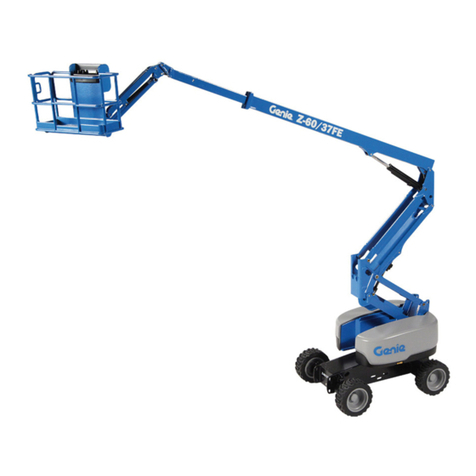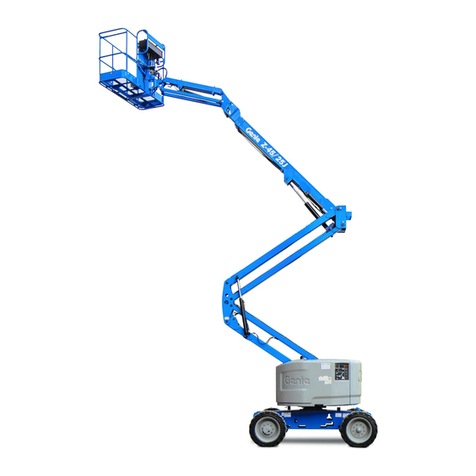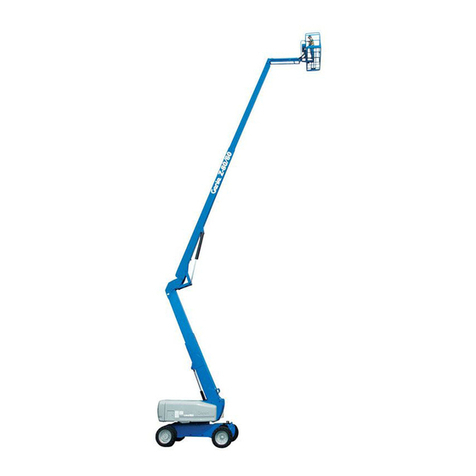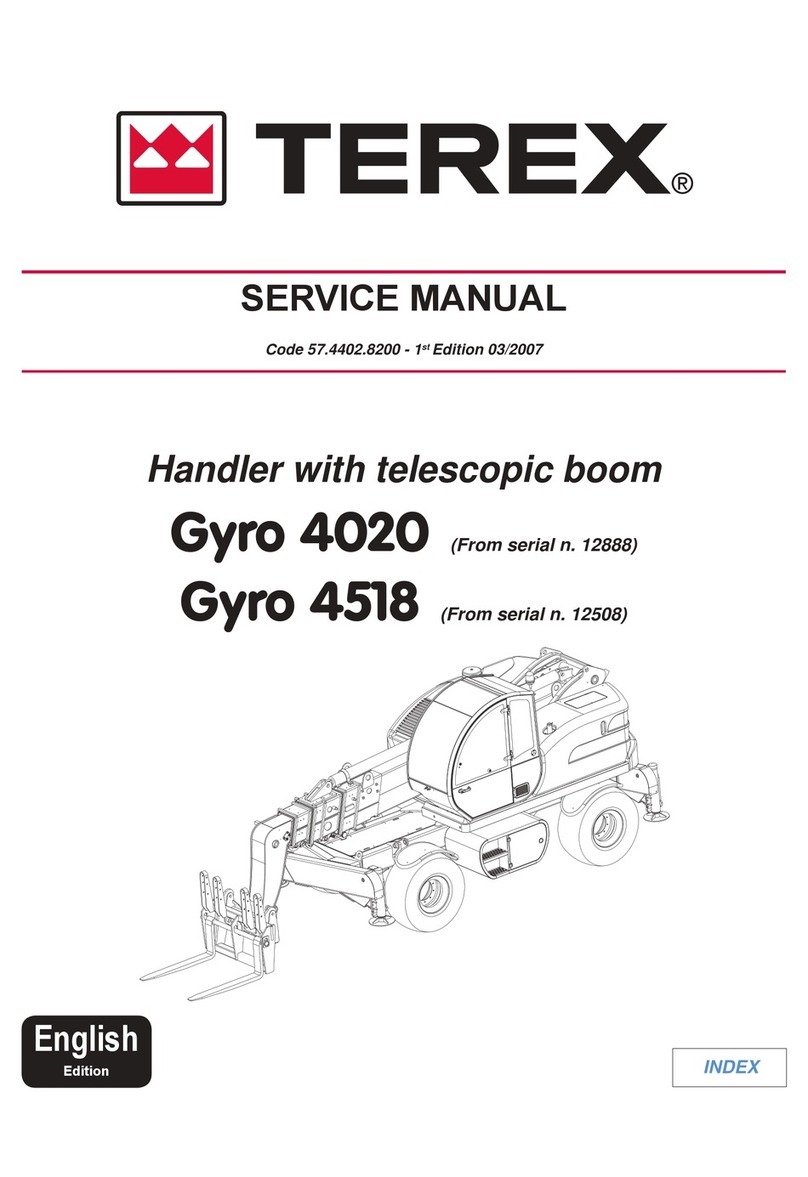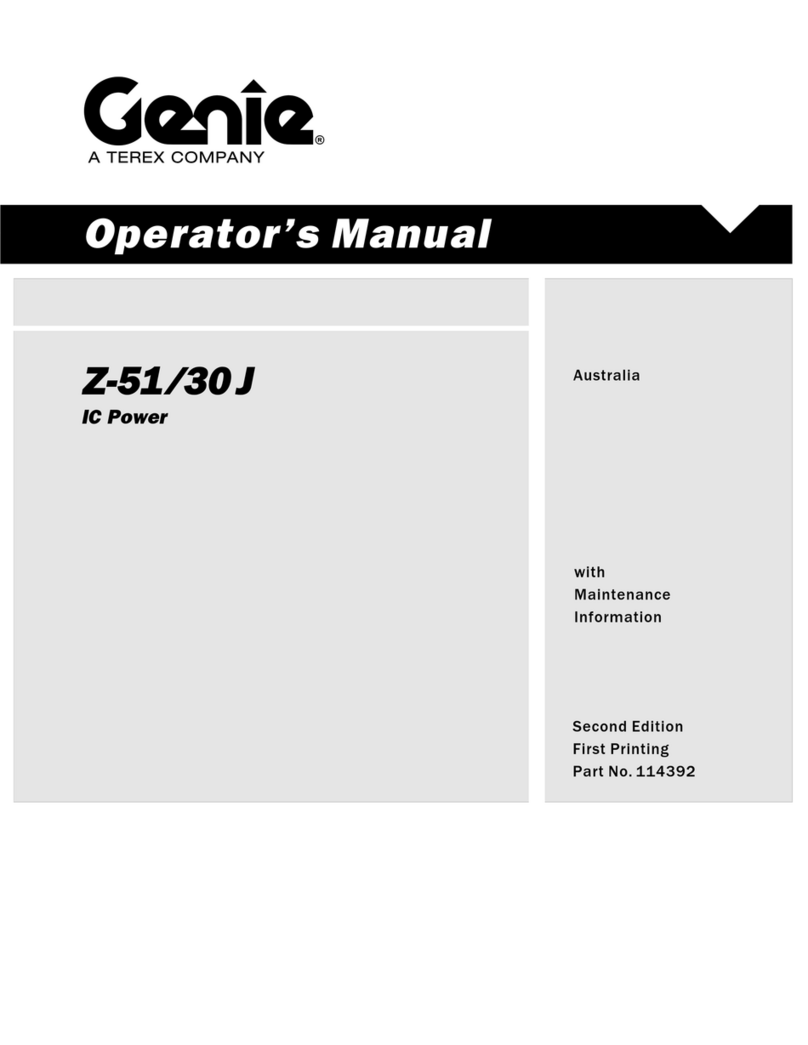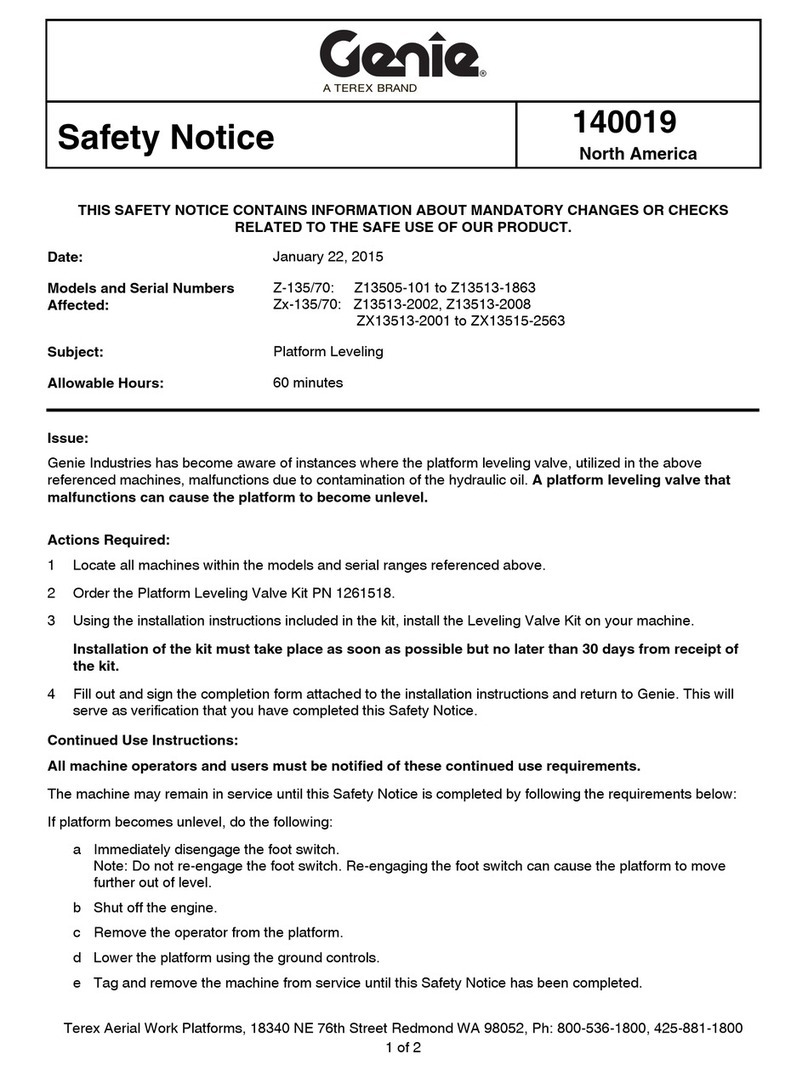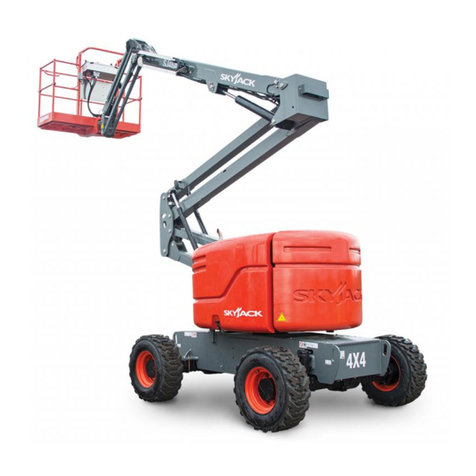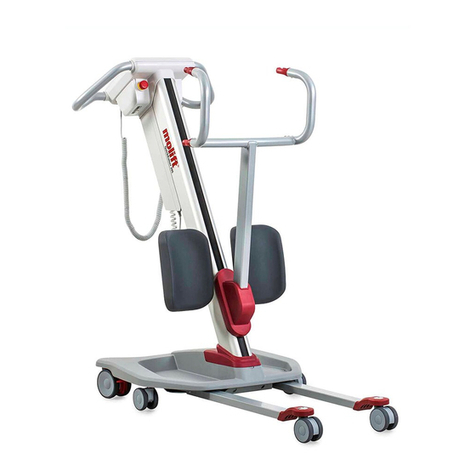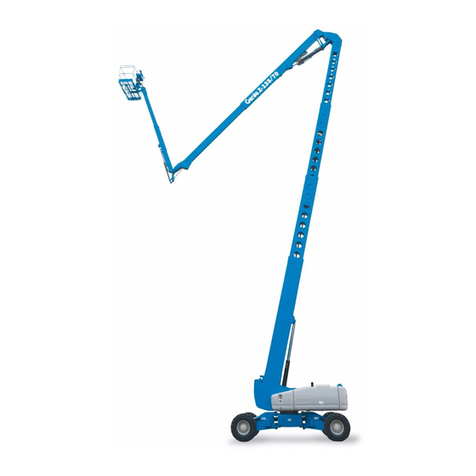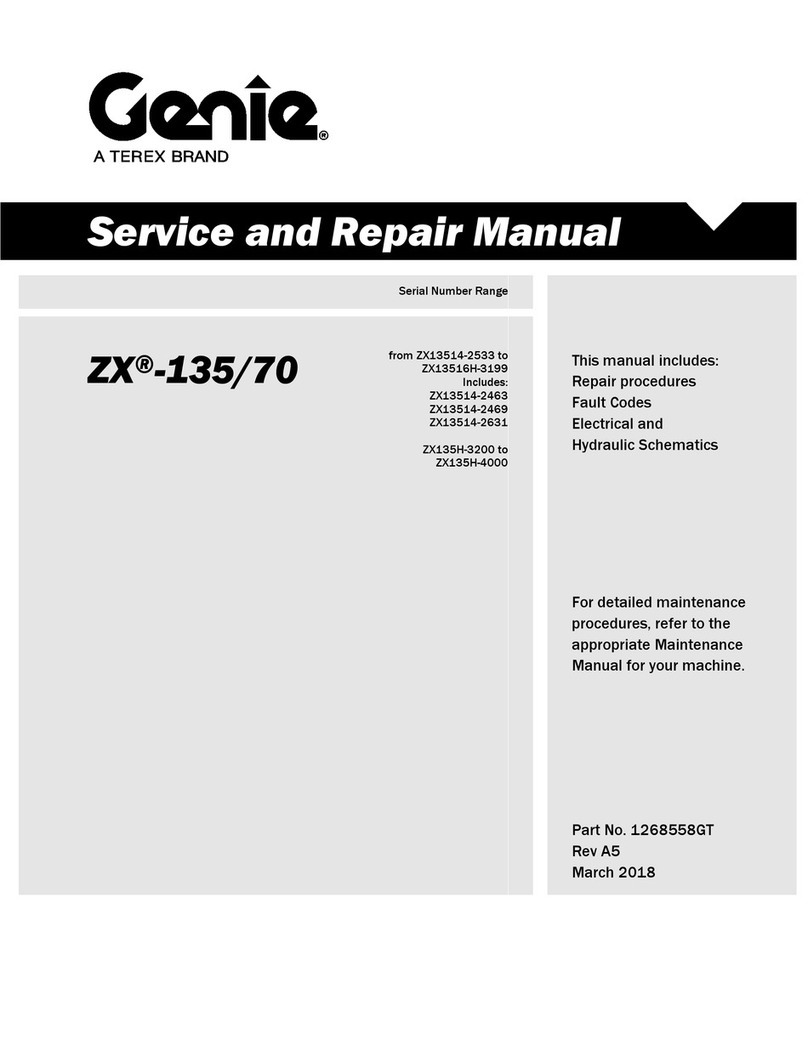
OPERATOR’S AND SAFETY MANUAL
1NO0039UK-00
Zebra 12
TABLE OF CONTENTS
Section 1. GENERAL DESCRIPTION................................................................................................................................... 8
1.1. DESCRIPTION ................................................................................................................................................................. 8
1.2. CHARACTERISTICS - DIMENSIONS ........................................................................................................................... 9
Section 2. SAFETY INSTRUCTIONS.................................................................................................................................. 13
2.1. GENERAL....................................................................................................................................................................... 13
2.2. TIPPING RISKS.............................................................................................................................................................. 14
2.3. CRUSHING AND COLLISION RISKS ......................................................................................................................... 15
2.4. ELECTROCUTION RISKS ............................................................................................................................................ 16
2.5. FALLING RISKS............................................................................................................................................................ 17
2.6. OTHER RISKS................................................................................................................................................................ 17
2.7. OPERATING LIMITATIONS ........................................................................................................................................ 18
2.8. TOWING, LIFTING, TRANSPORT............................................................................................................................... 18
2.9. MAINTENANCE ............................................................................................................................................................ 18
Section 3. PREPARATION AND INSPECTION................................................................................................................. 20
3.1 INSPECTION BEFORE START UP ............................................................................................................................... 20
3.2 INSPECTION TOUR ....................................................................................................................................................... 20
3.3 OPERATING CONTROLS.............................................................................................................................................. 23
Section 4. OPERATION......................................................................................................................................................... 25
4.1. CONTROLS AND INDICATORS.................................................................................................................................. 26
4.2. DIESEL ENGINE OPERATION .................................................................................................................................... 33
4.3. DRIVE –STEERING...................................................................................................................................................... 35
4.4. LIFTING STRUCTURE.................................................................................................................................................. 36
4.5. PARKING - STORAGE.................................................................................................................................................. 38
4.6. HANDLING –STOWAGE FOR TRANSPORT............................................................................................................ 40
Section 5. SAFETIES.............................................................................................................................................................. 41
5.1. TILT SENSOR ................................................................................................................................................................ 41
5.2. LOAD CONTROL........................................................................................................................................................... 42
5.3. SYSTEM FAULT............................................................................................................................................................ 42
5.4. MOVEMENT ALARMS................................................................................................................................................. 43
Section 6. EMERGENCY PROCEDURES .......................................................................................................................... 44
6.1. EMERGENCY CONTROLS........................................................................................................................................... 44
6.2. EMERGENCY TOWING................................................................................................................................................ 44
6.3. AFTER AN INCIDENT .................................................................................................................................................. 45
Section 7. MAINTENANCE FOR THE OPERATOR ........................................................................................................ 46
7.1. DIESEL ENGINE............................................................................................................................................................ 46
7.2. LUBRICATION .............................................................................................................................................................. 47
7.3. WHEELS ......................................................................................................................................................................... 48
7.4. BATTERY....................................................................................................................................................................... 49
Section 8. CONTROL MODULE......................................................................................................................................... 51
8.1. HOME SCREEN ............................................................................................................................................................. 51
8.2. MENUS ........................................................................................................................................................................... 52
8.3. SETTINGS –LOGS ........................................................................................................................................................ 66
8.4. TILT SENSOR CALIBRATION..................................................................................................................................... 70
8.5. REGENERATION OF THE PARTICLE FILTER (Option)........................................................................................... 72
Section 9. SCHEMATICS...................................................................................................................................................... 73
9.1. ELECTRICAL SCHEMATIC......................................................................................................................................... 73
9.2. HYDRAULIC SCHEMATIC.......................................................................................................................................... 74

